Black spots on palm leaves can be unsightly and may indicate a problem with the health of the plant. It is important to identify the underlying cause in order to effectively treat black spots on palm leaves.
There are several common causes of black spots on palm leaves, including nutrient deficiencies, problems related to watering, damage due to pests, and fungal infections.
One of the most common causes of black spots on palm leaves is nutrient deficiencies. Palms require specific nutrients in order to thrive, and deficiencies in these nutrients can lead to black spots on the leaves.
Problems related to watering, such as over or under watering, can also cause black spots on palm leaves. Additionally, damage due to pests such as spider mites or scale insects can cause black spots to appear on the leaves.
Preventing black spots on palm leaves involves proper care and maintenance of the plant. Effective treatments for black spots include proper fertilization techniques and the importance of pruning.
In severe cases, it may be necessary to seek professional help. By identifying the underlying cause of the black spots and taking steps to prevent them, palm owners can ensure the health and beauty of their plants.
Key Takeaways
- Identifying the underlying cause of black spots on palm leaves is crucial for effective treatment.
- Proper care and maintenance, including fertilization techniques and pruning, can prevent black spots from appearing.
- In severe cases, professional help may be necessary to restore the health of the plant.
Similar posts:
- How to Treat Black Spots on Hibiscus Leaves
- How to Treat Black Spots on Basil Leaves
- Black Spots on Kalanchoe Leaves
Identifying Black Spots on Palm Leaves
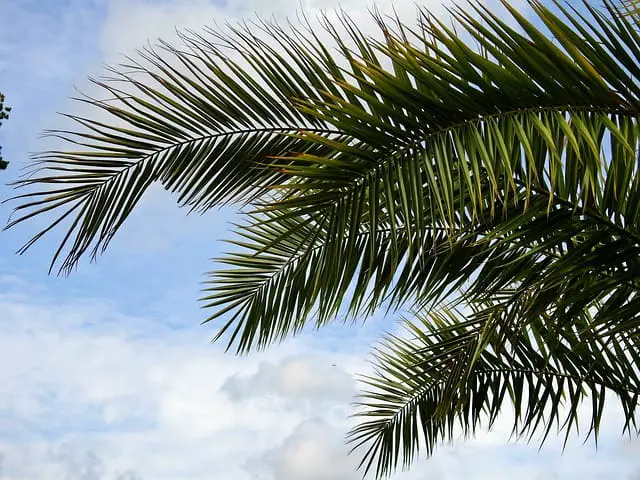
Black spots on palm leaves are a common issue that can be caused by a variety of factors. These spots can appear as black lesions or leaf spots, and can cause discoloration and damage to the leaves. Identifying black spots on palm leaves is an important first step in treating the issue.
One way to identify black spots on palm leaves is to look for circular or irregularly shaped spots that are black or dark brown in color. These spots may be accompanied by yellowing or browning of the surrounding leaf tissue, and may appear on one or multiple leaves.
Another way to identify black spots on palm leaves is to look for signs of fungal growth. Fungal infections can cause black spots on palm leaves, and may be accompanied by white or gray powdery growth on the leaves.
It is important to note that black spots on palm leaves can also be caused by nutrient deficiencies, insect infestations, or other environmental factors. Therefore, it is important to consider all possible causes when identifying and treating black spots on palm leaves.
If you are unsure about the cause of black spots on your palm leaves, it may be helpful to consult with a professional arborist or horticulturist to identify and treat the issue.
Black Spots on Palm Leaves – 4 Common Problems
Black spots on palm tree leaves can be caused by a variety of factors, including fungal diseases, insect infestations, and nutritional deficiencies. Here are some of the most common causes of black spots on palm tree leaves:
1. Fungal Diseases
Fungal diseases are a common cause of black spots on palm tree leaves. These diseases can be caused by a variety of fungi, including Graphiola, Fusarium wilt, and Diplocarpon rosae. Symptoms of fungal diseases can include black spots on the leaves, yellowing or browning of the leaves, and wilting of the plant.
2. Insect Infestations
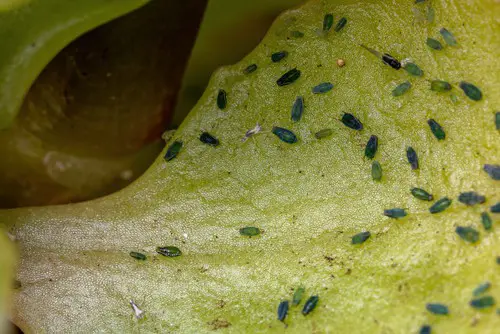
Insect infestations can also cause black spots on palm tree leaves. One example is diamond scale, which is caused by an infestation of armored scale insects. These insects feed on the sap of the plant, causing black spots on the leaves.
Another example is false smut, which is caused by an infestation of a type of insect called a midge.
3. Nutritional Deficiencies
Nutritional deficiencies can also cause black spots on palm tree leaves. One example is a deficiency of potassium, which can cause black spots to appear on the tips of the leaves. Other symptoms of potassium deficiency can include yellowing of the leaves and stunted growth.
4. Other Causes
Other causes of black spots on palm tree leaves can include bacterial infections, sooty mold, and ganoderma zonatum. These conditions can cause a range of symptoms, including black spots on the leaves, yellowing or browning of the leaves, and wilting of the plant.
It is important to identify the specific cause of black spots on palm tree leaves in order to treat the condition effectively. In some cases, it may be necessary to consult a professional arborist or horticulturist for advice on how to treat the problem.
Effects of Nutrient Deficiencies
Nutrient deficiencies can cause black spots to appear on palm tree leaves. Palm trees require a variety of essential nutrients to grow and thrive, including magnesium, potassium, calcium, and nitrogen.
When these nutrients are lacking, the palm tree may develop black spots on its leaves, as well as other symptoms such as yellowing, stunted growth, and leaf drop.
Potassium deficiency is a common cause of black spots on palm tree leaves. Potassium is essential for the palm tree’s overall health and helps regulate water movement within the plant.
When the palm tree is lacking potassium, it may develop black spots on its leaves, as well as other symptoms such as yellowing, necrosis, and leaf curling.
Magnesium deficiency can also cause black spots on palm tree leaves. Magnesium is essential for chlorophyll production and helps regulate plant growth. When the palm tree is lacking magnesium, it may develop black spots on its leaves, as well as other symptoms such as yellowing, stunted growth, and leaf curling.
Calcium deficiency can cause black spots to appear on palm tree leaves, as well as other symptoms such as yellowing, necrosis, and leaf curling. Calcium is essential for cell wall development and helps regulate water movement within the plant.
When the palm tree is lacking calcium, it may develop black spots on its leaves, as well as other symptoms such as stunted growth and leaf drop.
Nitrogen deficiency can cause black spots to appear on palm tree leaves, as well as other symptoms such as yellowing, stunted growth, and leaf drop. Nitrogen is essential for plant growth and helps regulate chlorophyll production.
When the palm tree is lacking nitrogen, it may develop black spots on its leaves, as well as other symptoms such as stunted growth and leaf drop.
Problems Related to Watering

Watering is one of the most crucial aspects of palm tree care. Improper watering can lead to a host of problems, including black spots on the leaves. Here are some problems related to watering that can cause black spots on palm leaves:
1. Overwatering
Overwatering is one of the most common reasons for black spots on palm leaves. When a palm tree is overwatered, the soil becomes waterlogged, and the roots start to rot. This can lead to a host of problems, including black spots on the leaves.
Overwatered palm trees can also have drooping leaves, brown leaf tips, brown stems, mold on the soil, and black roots due to root rot. To avoid overwatering, it is essential to water the palm tree only when the top inch of soil is dry.
2. Underwatering
Underwatering can also cause black spots on palm leaves. When a palm tree is underwatered, the leaves will start to turn brown and dry out. This can lead to black spots on the leaves. To avoid underwatering, it is essential to water the palm tree regularly, especially during hot and dry weather.
3. Poor Drainage
Poor drainage can also lead to black spots on palm leaves. When the soil does not drain properly, it can become waterlogged, leading to root rot and black spots on the leaves. To avoid poor drainage, it is essential to ensure that the palm tree is planted in well-draining soil and that the pot has drainage holes.
4. Irrigation
Irrigation systems can also cause black spots on palm leaves. If the irrigation system is not properly designed or maintained, it can lead to overwatering or underwatering, which can cause black spots on the leaves. To avoid this, it is essential to ensure that the irrigation system is properly designed and maintained.
5. Proper Watering
Proper watering is crucial to prevent black spots on palm leaves. It is essential to water the palm tree only when the top inch of soil is dry. The amount of water required will depend on the size of the palm tree, the soil type, and the weather conditions.
Damage Due to Pests
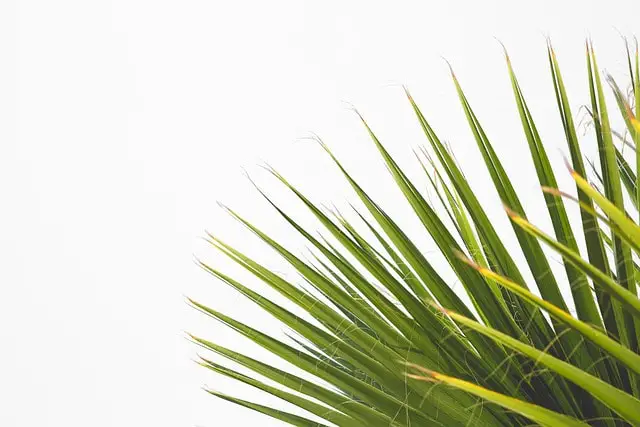
Pests are one of the major causes of black spots on palm tree leaves. Mealybugs, scales, spider mites, and other scale insects can infest palm trees and cause damage to the leaves. These pests feed on the sap of the leaves, which can lead to yellowing, wilting, and black spots.
Mealybugs are small, soft-bodied insects that are covered in a white, waxy substance. They often cluster on the undersides of leaves, and can cause yellowing and black spots on the leaves.
Scales are another type of insect that can cause black spots on palm leaves. They are small, hard-bodied insects that attach themselves to the leaves and feed on the sap. Spider mites are tiny, spider-like creatures that also feed on the sap of the leaves, causing yellowing and black spots.
If left untreated, these pests can cause significant damage to the palm tree. In severe cases, the leaves may die and fall off, leaving the palm tree susceptible to other diseases and pests.
To treat pests on palm trees, it is important to identify the type of pest and use the appropriate treatment. Insecticidal soap or horticultural oil can be used to control mealybugs and scales, while spider mites can be controlled with a miticide.
It is important to follow the instructions on the label carefully, and to apply the treatment at the right time of day to avoid damaging the leaves.
Regularly inspecting the palm tree for signs of pests and taking action as soon as they are detected can help prevent damage to the leaves and keep the palm tree healthy.
Preventing Black Spots on Palm Leaves
Prevention is key when it comes to black spots on palm leaves. Diligent care and regular maintenance can help keep your palm tree healthy and prevent the onset of fungal diseases.
One of the most important cultural practices to prevent black spots is proper watering. Avoid getting the foliage wet when irrigating, as this can create a humid environment that encourages fungal growth. Instead, water the soil around the base of the tree, allowing it to soak in slowly.
Maintaining the proper soil pH is also important. Palms prefer slightly acidic soil with a pH between 6.0 and 6.5. If the soil is too alkaline, nutrients may not be available to the tree, making it more susceptible to disease. Regular soil testing can help you keep the pH in the optimal range.
Good soil aeration and drainage are also important to prevent fungal diseases. If the soil is compacted or poorly drained, it can create a stagnant environment that encourages fungal growth. To improve soil aeration, consider adding organic matter such as compost or mulch to the soil.
Finally, good air circulation is essential to prevent fungal diseases. Make sure your palm tree is not crowded by other plants or structures that may block airflow. Pruning the tree regularly can also help improve air circulation and prevent the buildup of dead leaves and debris that can harbor fungal spores.
By following these cultural practices and maintaining a healthy palm tree, you can prevent black spots on the leaves and keep your tree looking its best.
Effective Treatments for Black Spots
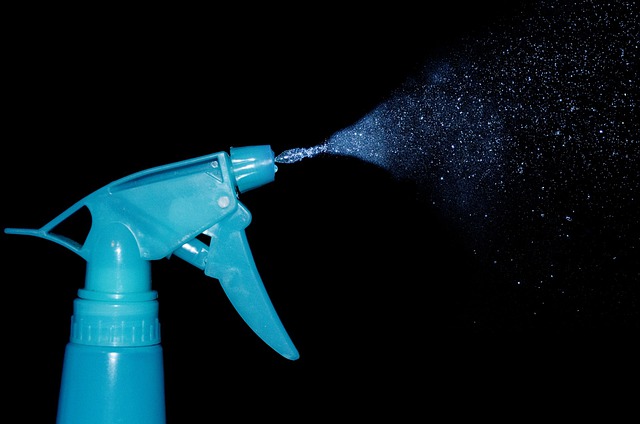
When it comes to treating black spots on palm leaves, there are several effective treatments available. These treatments include both cultural controls and the use of fungicides.
Cultural Controls
Cultural controls involve practices such as proper watering and fertilization, as well as pruning and removing infected leaves. It is also important to ensure that the palm tree is receiving adequate sunlight and air circulation. These measures can help prevent the spread of black spot disease and promote the overall health of the palm tree.
Fungicides
Fungicides can also be used to effectively treat black spot disease on palm trees. Copper-based fungicides are commonly used for this purpose. These fungicides work by preventing the growth and spread of fungal spores on the palm tree leaves.
Neem oil and horticultural oil can also be used as effective treatments for black spot disease on palm trees. These oils work by suffocating the fungal spores on the palm tree leaves, preventing them from spreading and causing further damage.
It is important to note that intervention at the first sign of black spots on palm leaves is crucial to effectively treating the disease. Delayed treatment can result in the spread of the disease to other parts of the palm tree, making it more difficult to control.
Proper Fertilization Techniques
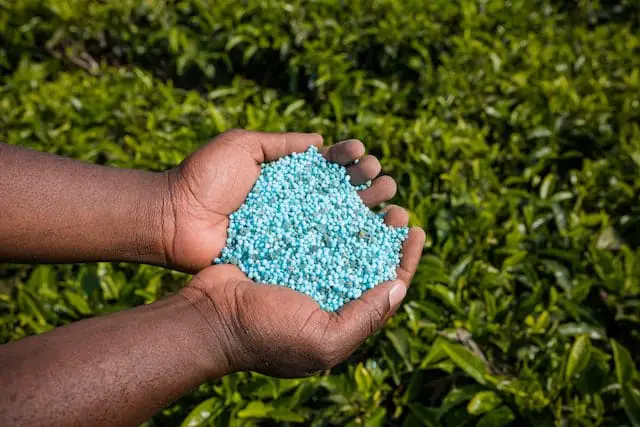
Fertilizing palm trees is essential to maintain their health and prevent the occurrence of black spots on their leaves. However, over-fertilization can also lead to problems. Therefore, it is important to follow proper fertilization techniques to ensure the optimal growth of your palm trees.
When selecting a fertilizer, it is important to choose one that contains the essential nutrients that palm trees require, such as nitrogen, phosphorus, and potassium. These nutrients help the palm trees develop strong roots, healthy leaves, and vibrant colors.
It is recommended to use slow-release fertilizers on palm trees to avoid over-fertilization. Slow-release fertilizers release nutrients gradually over time, providing a steady supply of nutrients to the palm trees. This helps to prevent nutrient deficiencies and over-fertilization, which can cause black spots on palm tree leaves.
Palm trees should be fertilized three to four times a year, depending on the type of fertilizer used and the age of the palm tree. It is important to follow the instructions on the fertilizer label to ensure that the correct amount of fertilizer is applied.
When applying fertilizer, it is important to spread it evenly around the canopy of the palm tree. Concentrating the fertilizer in one area can cause over-fertilization and can lead to the development of black spots on palm tree leaves.
Importance of Pruning
Pruning is an important step in treating black spots on palm leaves. It involves removing damaged, diseased, or dead plant tissue, including fronds, stems, and roots. Pruning helps to prevent the spread of disease and encourages healthy growth of new leaves.
When pruning, it is important to use sharp and clean pruning tools to avoid damaging the plant tissue. Dull or dirty tools can cause tearing or crushing of the plant tissue, which can lead to further damage or infection. Cleaning the tools with a solution of one part bleach to nine parts water can help prevent the spread of disease.
Pruning should be done regularly to remove any damaged or diseased leaves before they spread to healthy leaves. It is also important to remove any fronds that are withering or showing signs of stunted growth.
These fronds can be a sign of nutrient deficiency or disease, and removing them can help the plant focus its energy on healthy growth.
In addition to preventing the spread of disease, pruning can also improve the overall appearance of the palm tree. Removing dead or damaged fronds can make the tree look more aesthetically pleasing and healthy.
Professional Help for Severe Cases
If the black spots on the palm tree leaves persist despite the home remedies and treatments, it is best to seek professional help. A professional arborist can diagnose the problem and recommend the appropriate treatment for the palm tree.
The arborist may also check for any signs of other common palm tree diseases such as lethal yellowing, which is a fatal disease that affects the Arecaceae family of palms.
The disease is caused by a phytoplasma and can be spread by insects. Symptoms of lethal yellowing include yellowing of the leaves, followed by their death, and the development of wart-like structures on the stem.
In addition to lethal yellowing, the arborist may also check for other blights that affect palm trees, such as the Ganoderma butt rot, which is caused by a fungus. The disease can cause the palm tree to collapse, and it is spread through spores that are carried by wind or water.
If the palm tree is located in a landscape that is prone to tropical storms, it is important to have it inspected regularly by a professional arborist. The arborist can check for any signs of damage and recommend appropriate treatments to prevent the development of black spots on the palm tree leaves.
Finally, if the black spots on the palm tree leaves are caused by honeydew, which is a sticky substance secreted by insects such as aphids and scale insects, the arborist may recommend the use of insecticides to control the pests.
Conclusion
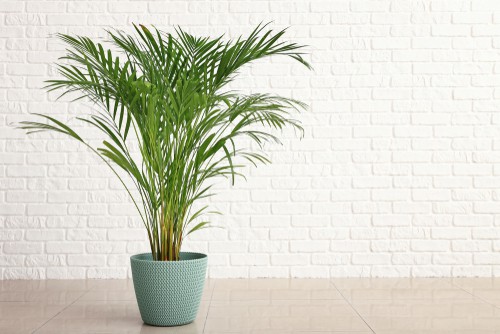
Treating black spots on palm tree leaves is an essential part of palm tree care. As discussed, these spots can be caused by various factors, including fungal infections, insect infestations, nutrient deficiencies, and environmental stressors. It is crucial to identify the underlying cause of the black spots before attempting to treat them.
In many cases, cultural controls such as proper watering and fertilization practices can help prevent black spots from forming on palm tree leaves.
Additionally, regular pruning of diseased leaves can help prevent the spread of fungal infections. When using fungicides to treat black spots, it is essential to follow the instructions on the label carefully.
Root rot, bud rot, and wilt are some of the most common diseases that affect palm trees. These diseases can cause black spots on the leaves, as well as other symptoms such as yellowing, wilting, and leaf drop. It is crucial to identify these diseases early and take appropriate action to prevent their spread.
High humidity and cold weather can also contribute to the formation of black spots on palm tree leaves. In areas with high humidity, it is essential to ensure proper air circulation around the tree. In cold weather, it is important to protect the tree from frost damage.
Frequently Asked Questions
What causes black spots on palm leaves?
Black spots on palm leaves are caused by a variety of factors, including fungal infections, nutrient deficiencies, and insect infestations.
Fungal infections are the most common cause of black spots on palm leaves, and they can be caused by a variety of fungi, including Cercospora, Pestalotiopsis, and Phaeochoropsis.
Nutrient deficiencies, particularly those involving magnesium, potassium, or calcium, can also cause black spots to appear on palm leaves. Insect infestations, such as those caused by aphids, can also lead to the development of black spots on palm leaves.
How can I prevent black spots from forming on my palm leaves?
Preventing black spots from forming on palm leaves requires proper care and maintenance of the palm tree. This includes regular watering and fertilization, as well as pruning dead or damaged leaves.
It is also important to avoid overwatering the palm tree, as this can lead to the development of fungal infections. In addition, using a fungicide spray can help prevent fungal infections from developing.
What is the best treatment for black spots on palm leaves?
The best treatment for black spots on palm leaves depends on the cause of the problem. For fungal infections, a fungicide spray containing copper can be effective.
For nutrient deficiencies, applying a fertilizer containing the deficient nutrient can help. Insect infestations can be treated with insecticidal soap or neem oil. It is important to identify the cause of the black spots before treating the problem.
Are black spots on palm leaves a sign of a more serious problem?
Black spots on palm leaves can be a sign of a more serious problem, particularly if they are accompanied by other symptoms such as yellowing or wilting of the leaves.
If the palm tree is also experiencing stunted growth or is producing fewer leaves than usual, this can be a sign of a more serious problem.
Do I need to remove palm leaves with black spots?
Removing palm leaves with black spots is not always necessary, particularly if the spots are caused by a minor problem such as a nutrient deficiency.
However, if the black spots are accompanied by other symptoms or if they are caused by a more serious problem such as a fungal infection, it may be necessary to remove the affected leaves.
Can black spots on palm leaves spread to other plants?
Black spots on palm leaves are not typically contagious and are unlikely to spread to other plants. However, if the black spots are caused by a fungal infection, it is important to take steps to prevent the infection from spreading to other parts of the palm tree.
This can include removing infected leaves and using a fungicide spray.

Hey, I’m Lisa and I’ve been an avid gardener for over 30 years. I love writing, talking and living in the garden! Feel free to connect with me on my socials below


